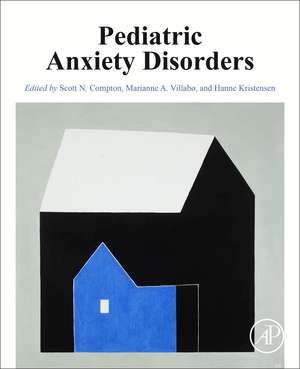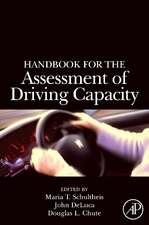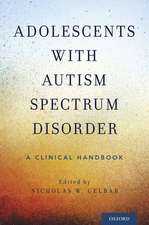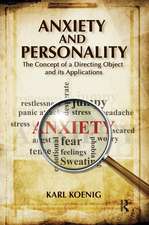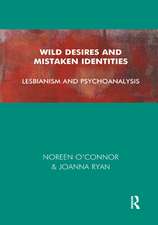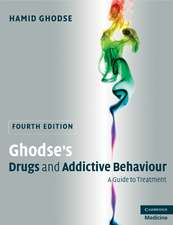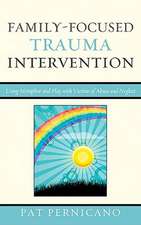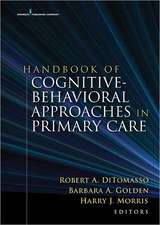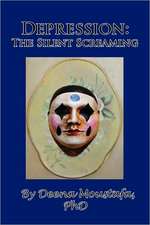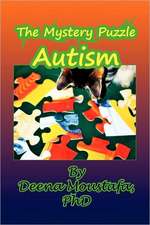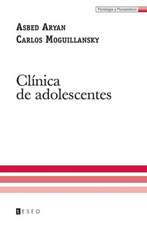Pediatric Anxiety Disorders
Editat de Scott N. Compton, Marianne A. Villabo, Hanne Kristensenen Limba Engleză Paperback – 28 mar 2019
- Uses the latest edition of the Diagnostic and Statistical Manual of Mental Disorders, the DSM-5
- Includes the Grading of Recommendations Assessment, Development and Evaluation (GRADE) approach in assessing guideline development
- Focuses on advances in etiology, assessment and treatment
- Presents new advances in our understanding of the brain behind fear and anxiety
- Uses a stepped care approach to treatment
Preț: 608.24 lei
Preț vechi: 828.95 lei
-27% Nou
Puncte Express: 912
Preț estimativ în valută:
116.42€ • 126.50$ • 97.86£
116.42€ • 126.50$ • 97.86£
Carte tipărită la comandă
Livrare economică 14-28 aprilie
Livrare express 14-20 martie pentru 229.52 lei
Preluare comenzi: 021 569.72.76
Specificații
ISBN-13: 9780128130049
ISBN-10: 0128130040
Pagini: 570
Dimensiuni: 191 x 235 x 29 mm
Greutate: 0.97 kg
Editura: ELSEVIER SCIENCE
ISBN-10: 0128130040
Pagini: 570
Dimensiuni: 191 x 235 x 29 mm
Greutate: 0.97 kg
Editura: ELSEVIER SCIENCE
Public țintă
Psychologists, psychiatrists, social workers; Researchers studying youth anxiety disorders; Graduate students of applied psychology, psychiatry and allied professionsCuprins
Section I. Foundations
1. Introduction
2. What is anxiety?
3. The genetic basis of child and adolescent anxiety
4. Etiological factors: Basic neuroscience
5. Etiological factors: Temperament and personality
6. Etiological factors; environment
Section II. Disorders
7. Specific phobia
8. Separation Anxiety disorder
9. Panic disorder and agoraphobia
10. Social anxiety disorder: An update on diagnostics; epidemiology; etiology; assessment, treatment; unanswered questions, and future directions
11. Selective mutism
12. Pediatric generalized anxiety disorder
13. Comorbidity in anxiety disorders
Section III. Interventions
14. Assessment of pediatric anxiety
15. Cognitive-behavioral therapy
16. Third-wave cognitive-behavioral therapies for the treatment of anxiety among children and adolescents
17. Pharmacologic treatment of pediatric anxiety disorders
18. New deliveries and technology
19. Dissemination and implementation
Section IV. Special Issues
20. When children and adolescents don't go to school: Terminology, technology, and trends
21. Ethnic and cultural considerations
22. Anxiety in emerging adulthood: A developmentally informed treatment model
23. Back to the future: Tracing the footsteps of Mary Cover Jones – The treatment of children and adolescents with anxiety disorders
1. Introduction
2. What is anxiety?
3. The genetic basis of child and adolescent anxiety
4. Etiological factors: Basic neuroscience
5. Etiological factors: Temperament and personality
6. Etiological factors; environment
Section II. Disorders
7. Specific phobia
8. Separation Anxiety disorder
9. Panic disorder and agoraphobia
10. Social anxiety disorder: An update on diagnostics; epidemiology; etiology; assessment, treatment; unanswered questions, and future directions
11. Selective mutism
12. Pediatric generalized anxiety disorder
13. Comorbidity in anxiety disorders
Section III. Interventions
14. Assessment of pediatric anxiety
15. Cognitive-behavioral therapy
16. Third-wave cognitive-behavioral therapies for the treatment of anxiety among children and adolescents
17. Pharmacologic treatment of pediatric anxiety disorders
18. New deliveries and technology
19. Dissemination and implementation
Section IV. Special Issues
20. When children and adolescents don't go to school: Terminology, technology, and trends
21. Ethnic and cultural considerations
22. Anxiety in emerging adulthood: A developmentally informed treatment model
23. Back to the future: Tracing the footsteps of Mary Cover Jones – The treatment of children and adolescents with anxiety disorders
